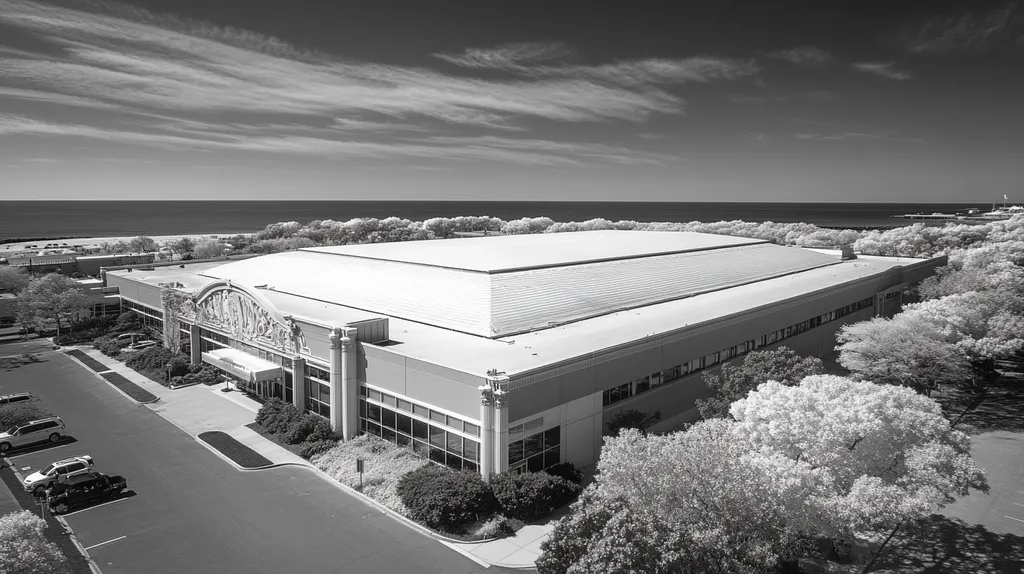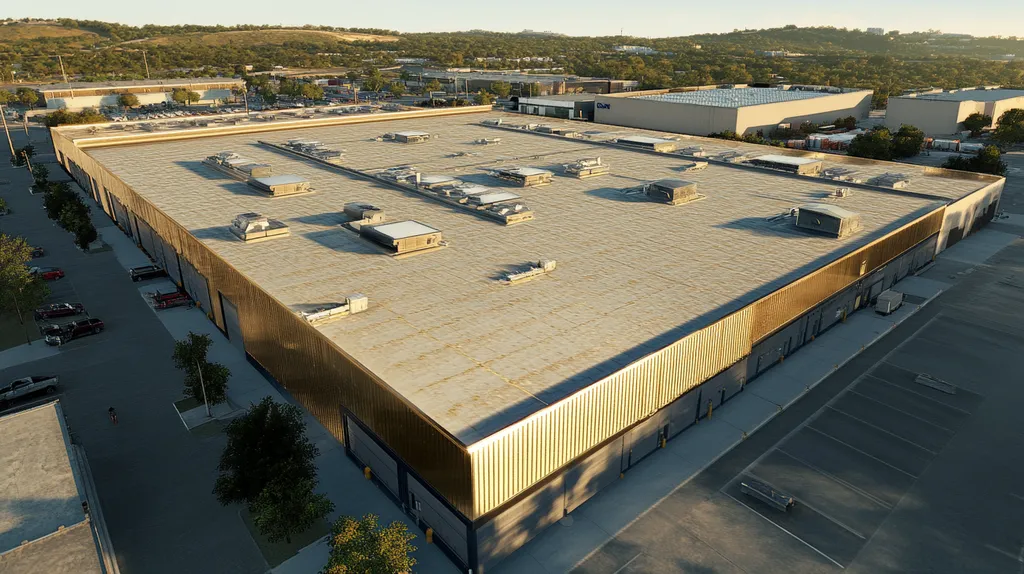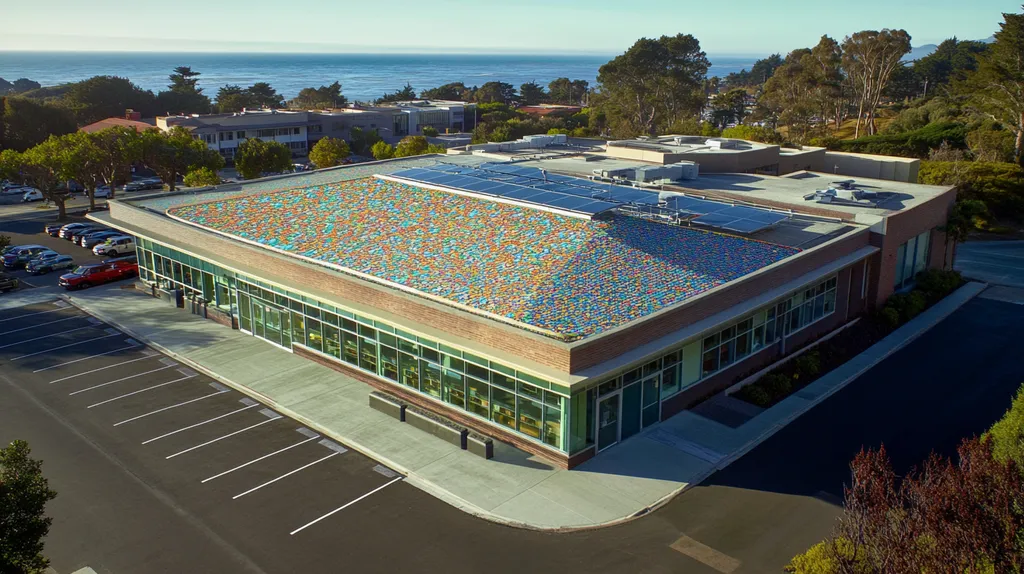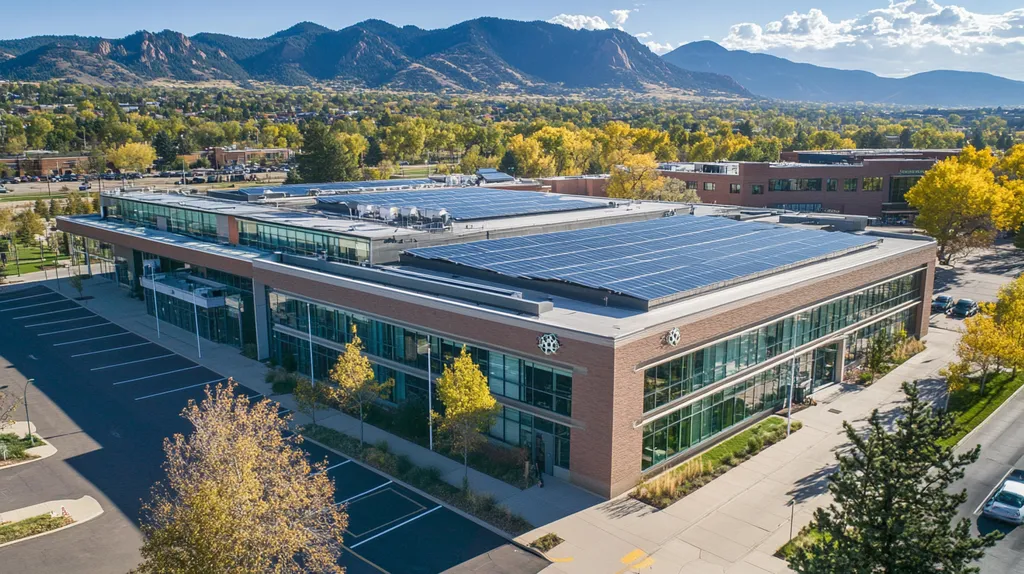In the commercial roofing industry, a startling statistic reveals that 80% of roofs fail prematurely due to misconceptions about their average lifespan. The financial impact of these failures costs property owners millions annually in unnecessary replacements and repairs.
From the era of traditional built-up roofing to today’s advanced synthetic materials, understanding a roof’s true lifespan potential has become increasingly critical for building owners and facility managers.
This comprehensive analysis examines common myths, practical implications, and evidence-based solutions that can help property owners maximize their roofing investments while avoiding costly mistakes.
SECTION 1: COMMON MISCONCEPTIONS
Property owners must grasp the true lifespan of commercial roof systems, as misconceptions can lead to expensive errors. For example, research indicates that neglecting roof maintenance can cut its lifespan by a staggering 40%. Therefore, shedding light on these myths is essential for preserving investments and ensuring the durability of roofing systems.
Modern Roofs Are Maintenance-Free
A widespread myth exists that modern roofing systems demand no maintenance. While it’s true that contemporary materials boast enhanced durability, they are not impervious to damage. Regular inspections and minor repairs are vital to extend a roof’s lifespan.
Many property owners mistakenly believe that the installation of a roof guarantees its long-term performance. Over time, exposure to weather elements like UV rays, rain, and snow can gradually erode roofing integrity. Routine upkeep not only protects the roof, but can also stave off significant damage in the future.
Experts recommend conducting inspections at least twice a year, particularly after severe weather events. Neglecting these critical assessments can lead to hidden leaks or structural weaknesses that may necessitate costly replacements.
Implementing maintenance programs enables property owners to remain informed about their roof’s condition, allowing for timely repairs and interventions. Acknowledging that a roof requires ongoing attention is crucial for ensuring its longevity and optimal performance.
Material Warranties Cover All Failures
Another common misconception pertains to the extent of material warranties. Many property owners assume that these warranties cover every type of failure. In reality, warranties come with specific terms and conditions.
Most manufacturers issue warranties that cover only defects in materials. Damage caused by improper installation, lack of maintenance, or natural disasters is often not included, which can lead to unexpected repair costs.
It is essential for property owners to familiarize themselves with warranty provisions. Some warranties may even require regular inspections and maintenance to remain valid. Reading and understanding these documents is a necessity for effective roof management.
Failing to grasp the limitations of these warranties can result in significant financial repercussions when issues arise. Being well-versed in warranty terms is not just an advantage; it is crucial for safeguarding investments and ensuring efficient roof oversight.
Maintenance is Optional
A prevalent belief is that maintenance is merely optional. This mindset can result in severe long-term consequences for a property’s roofing system. In reality, regular maintenance is integral to enhancing the lifespan of a roof by identifying and rectifying issues early on.
Without proactive care, minor leaks can develop into major problems over time. Neglecting small issues can lead to costly repairs down the road, emphasizing that investing in maintenance ultimately protects both the roof and the owner’s finances.
Furthermore, well-maintained roofs can improve energy efficiency. A roof in prime condition reflects heat more effectively, leading to reduced cooling costs. Thus, routine maintenance not only prolongs the roof’s life but also translates to significant operational savings.
It is critical for property owners to shift their perspective on maintenance from being optional to being a strategic necessity. By taking proactive measures, they can extend their roof’s lifespan, ensuring both financial protection and operational efficiency.
SECTION 2: PRACTICAL IMPLICATIONS
The lifespan of a commercial roof system goes beyond mere numbers; it plays a vital role in the overall functionality and safety of a building. Small, seemingly insignificant roofing issues can escalate into major problems, including damaging leaks and structural failures. Alarmingly, nearly 80% of commercial roofs fail prematurely due to neglect. By addressing critical factors such as maintenance, installation quality, and climate effects, property owners can significantly enhance the durability and longevity of their roofs.
Impact of Neglect on Roof Lifespan
When roofs are neglected, they often face grave consequences. Lacking regular inspections, minor issues can snowball into major problems like leaks and mold infestations. A single small crack, if overlooked, can lead to extensive water damage, costing owners significantly.
Preventive maintenance is essential for maximizing a roof’s lifespan. A well-maintained roof can last up to 20 years, while poorly maintained roofs may last a mere 10 years. Regular inspections allow property managers to catch small problems before they escalate into costly repairs.
Many property owners underestimate the necessity of addressing these early interventions. By investing in routine maintenance, they not only extend the roof’s life but also safeguard against unexpected financial burdens later on.
The stakes are substantial: a neglected roof can disrupt business operations and result in significant financial losses. For many, ensuring proper upkeep not only means protecting an asset but also maintaining healthy profit margins.
Consequences of Poor Installation
The quality of a roof’s installation is crucial to its long-term performance and health. Subpar installation practices can lead to immediate and costly problems, jeopardizing the entire roofing system. For example, inadequate sealing around joints often results in leaks that can appear within the first year.
Identifying installation errors usually requires expert inspections, which are often overlooked during the initial project phase. A roof lacking proper ventilation can deteriorate more quickly, facing premature failure.
The financial ramifications of poor installation can be staggering. Repairing or replacing a faulty roof can unexpectedly cost building owners thousands of dollars. In fact, a properly installed roof can extend its lifespan significantly compared to a poorly executed installation.
Property owners must be diligent in hiring qualified roofing contractors and insisting on quality assurance. Cutting corners during installation can lead to disastrous long-term consequences for a building’s integrity, making quality a non-negotiable factor.
Effects of Climate on Roofing Materials
Climate significantly influences the longevity of roofing systems. Each material behaves uniquely when exposed to varying environmental factors like temperature fluctuations, precipitation, and UV radiation. For instance, roofs in hurricane-prone regions endure greater wear from intense weather events.
In hot climates, materials such as asphalt may degrade faster, resulting in a shorter service life. In contrast, roofs situated in colder climates might develop ice dams and suffer from freeze-thaw cycles, both of which adversely affect durability.
Property owners should carefully consider local climate conditions when selecting roofing materials. Choosing appropriate roofing systems tailored to the environment can mitigate risks and improve overall performance.
Incorporating weather-resistant materials and designing roofs to withstand local conditions can drastically enhance longevity. Understanding this connection between climate and roofing is essential for property owners looking to invest wisely in durable solutions.
SECTION 3: COST OF MISINFORMATION
The stakes are alarmingly high when misinformation skews decision-making in commercial roofing. Erroneous beliefs about roof lifespan can lead to substantial financial repercussions. Property owners who replace their roofs prematurely often find themselves throwing away thousands of dollars on unnecessary replacements. This section sheds light on the hidden costs linked to misconceptions, including financial losses from early replacements, the uncovered expenses of reactive repairs, and missed opportunities for extended warranty coverage.
Financial Losses from Premature Replacement
Many property owners are mistakenly led to believe that their roofs require replacement every 15 years, prompting costly decisions. When roofs are replaced too soon, owners may end up paying for both materials and labor that could have been avoided. For instance, replacing a standard commercial roof can range from $5 to $10 per square foot, quickly adding up to tens of thousands of dollars for larger structures.
This isn’t just a one-time financial setback. Premature replacements can also disrupt business operations, adding unexpected costs of closure and downtime. Such decisions create a cascading effect on future budgets, where owners may struggle to fund other essential maintenance needs.
Using accurate lifespan data can lead to significant cost savings, directly improving a property owner’s financial position. Making informed decisions not only preserves resources but enhances overall building performance.
Uncovered Costs of Reactive Repairs
Outdated or incorrect information often leads property owners to manage their roofs reactively, waiting for issues to arise rather than proactively addressing them. Reactive repairs tend to be far more costly over time. When a problem occurs, immediate attention is required, which usually involves higher labor costs and emergency service fees.
Take, for example, a small leak that goes unaddressed. This seemingly minor issue can snowball, requiring extensive roof repairs alongside costly damage fixes to the interior of the building. The final expense often surpasses the original repair costs, straining the owner’s finances significantly.
Additionally, these urgent repairs can disrupt business operations, further impacting revenue streams. When repairs necessitate closing parts of a facility or ceasing certain activities, hidden costs quickly accumulate.
By understanding the actual lifespan of roofing systems, property owners can adopt a proactive maintenance strategy, which minimizes reactive repairs and leads to long-term savings.
Missed Opportunities for Extended Warranties
Misinformation can also result in property owners overlooking the chance to secure extended warranties for their roofing systems. Many manufacturers provide warranties that extend protection beyond standard coverage; however, these often come with prerequisites like regular inspections and ongoing maintenance. Owners who remain unaware of these requirements may inadvertently nullify their warranty by neglecting proper roof care.
The financial implications of missing out on these warranty options can be significant. For example, while a warranty might cover damages from specific weather conditions, neglecting to maintain the roof can void that protection entirely.
Additionally, failing to pursue extended warranties means forgoing peace of mind. Knowing that a roof is safeguarded against unforeseen failures fosters better budgeting and planning for property owners.
Ultimately, grasping warranty options and their requirements can insulate property owners from unexpected financial burdens. Accurate information is essential in unveiling these potential advantages.
SECTION 4: REALITY CHECK
The lifespan of a commercial roof is not just a number; it directly impacts a property’s value and operational costs for years to come. By understanding the average lifespan of different roof types, the necessity of routine inspections, and the importance of quality installation, property owners can avoid premature failures and costly repairs. Ignoring these critical elements can undermine the durability of roofing investments, leading to financial instability and peace of mind issues.
Average Lifespan by Roof Type
The lifespan of commercial roofs varies widely depending on the roofing material. Built-up roofs (BUR) generally last between 15 to 30 years, while single-ply membranes like TPO and PVC can hold up for 20 to 30 years. Conversely, metal roofs can deliver impressive longevity of 30 to 50 years or more, making them an attractive option for many commercial properties.
Each roofing type carries its own maintenance demands, with some requiring more frequent inspections than others. Flat roofs, for instance, may be prone to water pooling, while sloped roofs typically shed water more efficiently. A keen understanding of these differences is crucial for selecting the best roofing solution for climate and building function.
It’s also important to consider how the choice of roofing material affects energy efficiency. Reflective roofs, especially those made from certain single-ply membranes, help lower cooling costs by reflecting sunlight. Weighing these factors alongside expected lifespans leads to smarter long-term investments.
Role of Regular Inspections and Maintenance
Regular inspections and proactive maintenance significantly contribute to extending a roof’s life. Many property owners overlook this essential aspect, allowing minor issues to develop into significant concerns. Most roofing systems benefit from inspections at least twice a year, especially after severe weather events.
Trained professionals can identify early signs of trouble, such as loose flashing or small leaks, during these inspections. Timely repairs can prolong a roof’s lifespan considerably, potentially saving property owners thousands of dollars in unexpected repair costs.
Moreover, keeping gutters and drainage systems clear prevents water accumulation, safeguarding the roof’s integrity. Establishing a routine maintenance schedule enhances the roof’s longevity, ensuring that the asset remains in top condition.
Influence of Quality Installation
The quality of a roof’s installation is vital for determining its longevity. Poor workmanship or the use of inadequate materials can significantly shorten its expected lifespan, leading to costly repairs. Engaging qualified roofing contractors who adhere to industry best practices is essential.
For instance, roofs installed with insufficient adhesive or incorrect flashing are prone to leaks and moisture damage, drastically reducing lifespan. This highlights the necessity of hiring experienced contractors who comprehend the complexities of various roofing systems.
Investing in high-quality materials during installation can also enhance longevity. Although this may require a higher initial investment, the durability and reduced maintenance needs often result in better long-term returns.
SECTION 5: EVIDENCE-BASED ALTERNATIVES
For commercial property owners, sustaining a roof is not just an act of maintenance; it’s a vital strategy that impacts long-term asset value. Neglecting proactive care can lead to dire financial consequences, including exorbitant repair costs and shortened lifespans. Studies show that a well-maintained roof can endure up to 50% longer than one that is ignored. In this section, we highlight actionable strategies that can optimize the longevity of commercial roofing systems.
Proactive Maintenance Schedules
Implementing a proactive maintenance schedule is critical for safeguarding the functionality of a commercial roof. Routine inspections catch minor issues before they balloon into major problems. For example, if a small leak is detected and repaired early on, it can prevent extensive water damage and mold growth, saving thousands in costly repairs.
A structured maintenance program also aids in budget management. Property owners can forecast associated upkeep costs, steering clear of unplanned expenses. Moreover, a roof that’s regularly maintained is more energy-efficient, effectively lowering utility bills and promoting sustainability.
Keeping a detailed log of all maintenance activities serves as a valuable historical record of the roof’s condition. This information benefits both current owners and future buyers, enhancing the building’s market value in a competitive landscape.
In essence, consistent proactive maintenance not only extends a roof’s lifespan but also boosts tenant comfort and safety. Such a strategic focus is paramount in the realm of commercial roofing.
Benefits of Annual or Semi-Annual Inspections
Conducting annual or semi-annual roof inspections is a foundational element of diligent roof management. These evaluations can uncover vulnerabilities such as damaged flashing or ponding water, which threaten the roof’s overall integrity. Addressing these concerns promptly is essential for prolonging the roof’s lifespan while averting unnecessary replacement costs.
Regular inspections also help property owners stay compliant with warranty stipulations. Various manufacturers often require periodic checks to validate warranties. Sticking to these guidelines is crucial for recovering costs when warranty claims arise.
Inspection reports offer actionable insights that empower facilities managers to make informed decisions. Equipped with precise data on the roof’s condition, they can prioritize repairs and allocate budgets efficiently. This preparedness not only ensures safety but also strengthens the roof’s durability.
Ultimately, the investment in regular inspections yields substantial returns in reduced operational disruptions, enhanced property value, and increased tenant satisfaction. These evaluations should be perceived as an essential aspect of comprehensive asset management.
Choosing the Right Roofing Materials
Selecting the correct roofing materials is crucial for achieving durability in commercial roofing systems. Each material possesses distinct properties, advantages, and disadvantages, making informed decisions vital. For instance, thermoplastic polyolefin (TPO) is renowned for its minimal environmental impact and resilience, while built-up roofs (BUR) provide excellent water resistance.
Though higher-quality materials may entail elevated upfront costs, they frequently result in lower life-cycle expenses. Quality materials withstand harsh weather conditions, reducing repair frequencies over time. This consideration underscores the need to evaluate not just the initial expense but the long-term value and performance of materials.
Moreover, local climate conditions must heavily inform material selection. In regions susceptible to heavy snowfall, steeply sloped roofs constructed with robust materials can effectively prevent snow accumulation. Aligning material choices with environmental realities ensures optimal performance and lifespan.
Engaging a skilled roofing contractor can lead to superior outcomes. Professionals can recommend the most suitable materials based on building design, local weather patterns, and unique needs, resulting in smart investments that pay dividends in durability and efficacy.
SECTION 6: TEST AND VERIFY
Understanding the condition and history of a commercial roof can significantly impact its longevity and effectiveness. Without diligent oversight, property owners expose themselves to the risk of substantial damage and costly repairs. In fact, studies show that a lack of regular assessments can reduce a roof’s lifespan by as much as 20%. This section emphasizes the importance of verifying maintenance records, conducting consistent roof condition assessments, and ensuring compliance with warranty requirements.
Verifying Maintenance Records
Regularly updated maintenance records are essential; they serve as a comprehensive history of the roof’s care. By tracking repairs, renovations, and routine upkeep, property owners gain valuable insights into past care and can anticipate future needs more effectively.
Neglecting to keep these records organized can result in missed compliance requirements or even void warranties. It’s vital to implement a systematic approach for maintaining these documents, with digital platforms available to simplify record-keeping.
Reviewing maintenance logs can reveal patterns that highlight recurring issues. For example, if leaks frequently occur in a specific area, this might indicate a deeper, underlying problem. Recognizing such trends allows property owners to make informed and timely decisions.
By regularly revisiting and verifying maintenance records, property owners can not only enhance the roof’s viability but also better plan for future renovations and installations.
Conducting Regular Roof Condition Assessments
Conducting thorough roof condition assessments is essential for maintaining a commercial roof’s integrity. These evaluations help in identifying potential problems before they escalate into more serious issues. A professional inspection every two years is typically advised to detect normal wear and assess vulnerabilities.
During these assessments, certified roofing professionals focus on critical areas such as seams, flashings, and drainage systems. Documenting findings allows property owners to identify where preventative measures are necessary, which can ultimately save thousands of dollars in unexpected repairs.
New technologies, including drones and infrared imaging, can significantly enhance these inspections, providing detailed views without compromising safety. Utilizing advanced methodologies can lead to more accurate assessments and more effective maintenance strategies.
A proactive approach to these assessments empowers facilities managers to prioritize repairs and allocate budget resources efficiently, thereby enhancing the long-term resilience of their roofing systems.
Ensuring Compliance with Warranty Requirements
Warranties are critical to safeguarding investments in commercial roofing systems. However, many property owners are unaware of specific maintenance and assessment requirements outlined within warranty documents. Failing to comply with these terms can result in voided warranties and significant out-of-pocket expenses.
To mitigate these risks, property owners should take the time to familiarize themselves with warranty details, including required inspections and maintenance tasks. Developing a compliance checklist based on these obligations can ensure that investments remain protected.
Maintaining open communication with roofing manufacturers or contractors can also clarify warranty conditions. Seeking guidance can uncover opportunities for potential upgrades and enhancements that further protect warranties.
Ultimately, ensuring compliance not only safeguards a roof’s warranty but also delivers peace of mind to property owners, reassuring them that they are maximizing their investments while minimizing risk.
Looking Ahead
The commercial roofing industry stands at a crucial turning point, where misconceptions about roof lifespans cost property owners an estimated $3.7 billion annually in premature replacements and emergency repairs.
Today’s advanced roofing systems can last 30-50 years when properly maintained, yet 80% fail prematurely due to preventable causes.
As building technologies evolve, the lessons learned from decades of roofing experience become increasingly valuable for protecting these substantial investments.
The path forward requires dispelling outdated myths, implementing proactive maintenance programs, and embracing evidence-based practices that maximize roof longevity.
Property owners who align their roof management strategies with proven industry standards will see significantly better returns on their roofing investments while avoiding costly mistakes that have plagued previous generations.
FREQUENTLY ASKED QUESTIONS
Q. What misconceptions exist about commercial roof lifespan?
A. Many believe modern roofs require no maintenance, leading to unnecessary costs. Regular inspections and upkeep are essential to extend a roof’s life and catch issues early. Ignorance about maintenance needs can not only shorten lifespan but also result in unexpected repairs.
Q. How does neglect affect the lifespan of an industrial roof?
A. Neglecting an industrial roof can lead to severe consequences, including leaks and mold. Regular inspections help identify minor problems before they escalate, ultimately maximizing the roof’s lifespan. A neglected roof can drastically shorten its functionality and lead to expensive repairs.
Q. What costs arise from misinformation about commercial roofs?
A. Misinformation can lead to premature roof replacements, resulting in substantial financial loss. Covering unnecessary replacements and reactive repairs adds up quickly, impacting overall operational budgets. Understanding correct lifespan data can enhance financial planning and save significant expenses.
Q. Why is knowing average lifespans for different roof types important?
A. Each roof type has a distinct average lifespan; understanding these differences aids in investment decisions. For example, metal roofs last longer than built-up roofs. Recognizing these variations ensures property owners choose the right materials for their specific needs and climate.
Q. How can proactive maintenance schedules benefit commercial roofs?
A. Proactive maintenance schedules enable early problem detection and extend roof lifespan significantly. By addressing small leaks or damage promptly, property owners avoid costly repairs and disruptions. Regular upkeep not only prolongs longevity but also supports energy efficiency and cost savings.
Q. What role do regular assessments play in roof longevity?
A. Regular assessments identify vulnerabilities and help in documenting the roof’s condition. This proactive approach allows for timely interventions, thus preventing minor issues from becoming major repairs. Consistent evaluations ultimately lead to better asset management and financial stability.
Q. How does climate affect the choice of commercial roofing materials?
A. Climate directly impacts roofing material performance; appropriate choices mitigate risks. For instance, regions with heavy snowfall require robust materials to prevent snow accumulation. Aligning materials with local climate conditions enhances durability, ensuring optimal roof performance and longevity.











